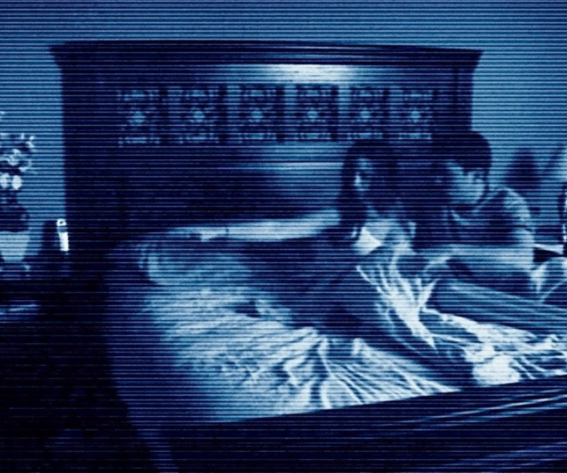Picture this: You’re holding a shaky camera in your sweaty palms, your heart racing as you navigate the dark, unknown territory. The screen flickers with each step, capturing your fear and anticipation. This is the world of found footage films, a genre that once took the movie industry by storm, but now seems to have faded into obscurity.
In the late ’90s and early 2000s, found footage films were all the rage. They offered a unique and immersive cinematic experience that made audiences feel like active participants in the unfolding drama. But what happened to this once-thriving genre, and why did it seemingly fall from grace? Let’s take a closer look at the rise and fall of found footage films.
The Rise: A Fresh and Terrifying Perspective
Found footage films burst onto the scene with “The Blair Witch Project” in 1999. Directed by Eduardo Sánchez and Daniel Myrick, this low-budget indie film became a massive hit, grossing over $248 million worldwide. The movie was marketed as a true story, following three filmmakers who get lost in the woods while investigating a local legend.
What set “The Blair Witch Project” apart was its innovative use of shaky, handheld cameras to create a sense of authenticity and immediacy. Audiences were drawn into the story, feeling like they were right there with the characters as they faced unimaginable horrors. This newfound sense of realism made found footage films an instant sensation.
Following the success of “The Blair Witch Project,” Hollywood saw the potential of this innovative storytelling style. Filmmakers recognized that found footage films were cost-effective to produce, making them an attractive option for studios. The formula was simple: a group of people, often inexperienced with filmmaking, would document their terrifying experiences on camera.
The result? A slew of found footage films hit theaters and video stores. “Paranormal Activity“, “Cloverfield” and “REC” were just a few of the successful titles that capitalized on this trend. These movies leveraged the audience’s voyeuristic tendencies, plunging them into a world of supernatural entities, monsters, and psychological horror.
The Fall: Overexposure and Stale Formulas
As with any trend, found footage films started to lose their luster. What was once fresh and exhilarating became predictable and formulaic. The shaky cam and “found” aspect of the footage began to feel tired and overused. I personally lost count of the many Paranormal Activity sequels, which were all really the same, with a small set of minor differences in terms of setting, house type and so on. And the fact that the formula allowed for little innovation was not the only problem.
One issue that plagued the genre was the difficulty of sustaining the illusion of reality throughout the entire film. As audiences became more discerning, they started noticing inconsistencies in the footage that stretched credibility. The initial charm of found footage films, the feeling that they could be real, began to wear thin.
Another problem was the tendency for found footage films to rely on jump scares and repetitive storylines. It seemed like every other film followed the same pattern: a group of people would venture into a dangerous situation, something creepy would happen, chaos would ensue, and the footage would end abruptly. This lack of innovation and reliance on cheap thrills started to alienate viewers.
The Revival: Reimagining the Genre
While found footage films may have fallen out of favor in their traditional form, the genre experienced a revival of sorts with filmmakers exploring new ways to tell stories using this style.
One notable example is “Chronicle” (2012), directed by Josh Trank. Rather than horror, this film focused on the superhero genre, following three friends who gain telekinetic powers. The characters use their newfound abilities to document their experiences, leading to a fresh and exciting take on the found footage format.
“Unfriended” (2014) took the concept a step further by setting the entire film within the confines of a computer screen, capturing a group of friends’ online conversation as they are terrorized by a vengeful spirit. This innovative approach breathed new life into the genre, showing that found footage could adapt to modern technology and storytelling techniques.
The Future: A Niche Market and Occasional Gem
Today, found footage films continue to exist, but they’ve become somewhat of a niche market. While they may not dominate the box office like they once did, there are still occasional gems that break through the noise.
One standout example is “Searching” (2018), a thriller directed by Aneesh Chaganty. The film unfolds entirely on computer screens and smartphones as a father searches for his missing daughter. Although not a traditional found footage film, “Searching” demonstrates how the genre’s conventions can be adapted and integrated into innovative storytelling methods. Other than that, Taiwanese horror film “Incantation” (2022) also plays around with some innovative storytelling tropes, with its folk background, breaking of fourth wall and non-linear narrative as standout elements.
In conclusion, the rise and fall of found footage films reflect the cyclical nature of cinematic trends. What was once groundbreaking and exciting eventually succumbed to overexposure and formulaic storytelling. However, the genre has not disappeared entirely; it has evolved and found new ways to engage audiences. Whether you’re a fan of the classics or eager to explore the genre’s modern reinventions, found footage films continue to offer a unique and immersive cinematic experience for those willing to give them a chance.









Leave a reply